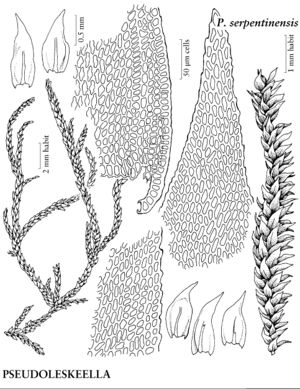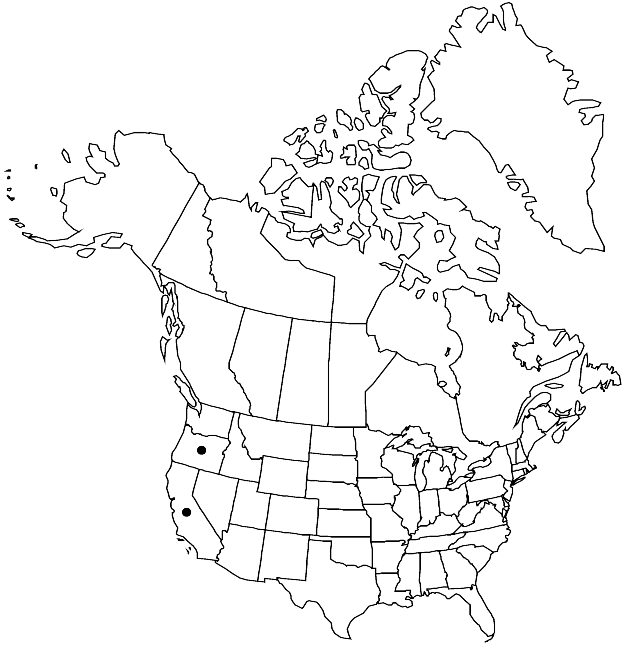Pseudoleskeella serpentinensis
Bryologist 92: 391, figs. 30 – 39. 1989.
Plants red, red-brown, or green. Stems loosely appressed to substrate, branches appressed. Stem leaves not catenulate when dry, homomallous, ovate to lanceolate, abruptly narrowed to apex, weakly concave, not or weakly plicate, 0.3–1.5 mm, 2–3:1; base not flaring or cordate; margins plane or rarely recurved proximally, finely serrulate distally; apex short-acuminate to acuminate, sometimes falcate; costa single or occasionally 2-fid distally, moderately strong, usually to mid leaf; medial laminal cells 2:1, walls incrassate. Branch leaves ovate to suborbicular, 0.3–1 mm; laminal cell walls incrassate. Stoloniferous leaves ovate or orbicular. Sporophytes unknown.
Habitat: Serpentine rock
Elevation: low to moderate elevations (50-1000 m)
Discussion
Of conservation concern.
Pseudoleskeella serpentinensis, considered rare, is known only from sterile and female plants. The reddish color, elongate laminal cells of the stem leaves, serrulate distal leaf margins, and homomallous drawn out leaf apices are diagnostic. On fertile plants, the perichaetial leaves are recurved, whereas they are erect to appressed in the other species. The leaf costae are somewhat flared in the base of the acumen. The stoloniferous leaf medial laminal cells are elongate, 3–6:1.
Selected References
None.

